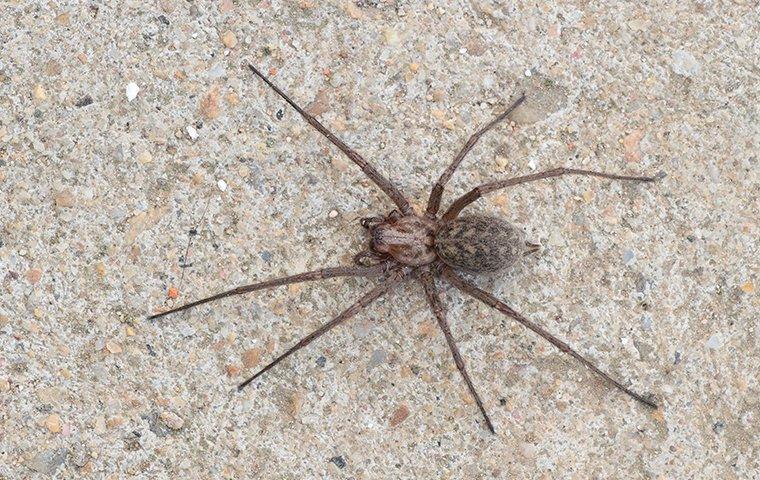Unpacking The Most Commonly Told Myths About South Bend Spiders
Spiders are rarely, if ever, a welcome sight in our homes. Many people have arachnophobia, a fear of spiders; in fact, according to the Cleveland Clinic, up to 15 percent of the world's population deals with arachnophobia! Some spider fears may be fueled more by myth and legend than fact and science. Dispelling spider myths may help South Bend residents with their fear of spiders.

Five Strange But True Spider Facts
Spiders are not insects; they are arachnids, a subtype of arthropods. Arachnids do not have antennae, and have eight legs and segmented bodies consisting of a thorax and an abdomen. Despite how common it is to see spiders in your home, there are still some surprising facts to learn about them, such as:
- Spider web silk is tougher than steel. Spider silk is stronger than steel when comparing a strand of steel against spider silk of the same size.
- Some spiders can fish with their webs. Some spiders use their silk like a fishing line to catch passing prey.
- Some tarantulas use their hairs like weapons. Some tarantulas can remove their hairs and throw them as a self-defense mechanism.
- Some jumping spiders can see UVA and UVB light. Some species of jumping spiders see light spectrums that human eyes cannot see.
- Female spiders can lay thousands of eggs at a time. Spider eggs are contained within egg sacs, and these sacs can contain hundreds or even thousands of eggs.
Although strange, these spider facts are true!
Why Do Spiders Build Webs?
Spider webs may seem like a mystery from our perspective; they're messy eyesores when found in our homes, but they do play a vital role in the life of a spider. Many types of spiders use their silk to spin webs in which they catch food. Trap-door spiders take this meal-catching to another level, creating hinged doors that drop their prey down into the spider's lair. Some spiders, like the brown recluse spider, use their web as a cozy retreat. Spider webs are also used to send messages between spiders. Each vibration can signal something different to spiders, from food to emergency.
Some Commonly Told Spider Myths
Despite all you have learned about spiders, there may be some age-old myths that you still cling to. Let's break some of these myths down:
- Spiders suck the blood or juices out of their prey: Most spiders actually spray their prey with digestive fluids to help break down the meal before using their jaws to eat.
- All black widow spiders eat their mates: There are several species of black widow spiders, and for most species, the females do not eat their male partners. Additionally, of the black widow species that do partake in cannibalism, the phenomenon does not occur 100 percent of the time.
- We swallow many spiders in our sleep: There is no evidence that this myth is true. It would take a lot for one spider to end up in a human's mouth, let alone several spiders in a lifetime!
These myths, and others like them, have run rampant in our collective understanding of these pests, to the point where we have all but accepted them as fact. Taking a closer look at spiders makes them a lot less monstrous!
Total Spider Control For South Bend Homeowners
There are several species of spiders in Indiana that South Bend residents can expect to see, such as cellar spiders, house spiders, and jumping spiders, just to name a few.
Cellar spiders, also sometimes called daddy long-legs, prefer dark and damp areas. These spiders are typically pale yellow and are easily identifiable by their long, thin legs. Cellar spiders can often be found in basements, attics, and crawl spaces where they eat small insects. They are not poisonous and are known to be more of a nuisance pest than a real threat.
Common house spiders are, as their name suggests, the most likely culprit of a spider infestation in your home. They are small and come in a variety of shades. House spiders do well indoors, particularly in older homes, sheds, and garages where humidity and other insects are greater.
There are hundreds of types of jumping spiders that live in the United States. Although jumping spiders can be any color, they are most often black. Unlike most spiders, jumping spiders love sunshine and are most active during the day. In fact, their eyesight is better adapted for the day than the night. Outside, jumping spiders prefer to live beneath debris that offers privacy. If they do make their way into your home, jumping spiders prefer to live within doorways or windows where there are ample opportunities to catch insects.
If you are dealing with a spider infestation and you're looking to get rid of spiders, then you need to work with a professional. The experts at Termishield Termite & Pest Protection can help keep your home spider-free. We offer quality local pest control backed by over a decade of service. Reach out to Termishield Termite & Pest Protection today to enjoy your South Bend home, free of spiders!
Tags: spiders | spider control | spider information |
Request Your Free Inspection
Complete the form below to schedule your no obligation inspection.

